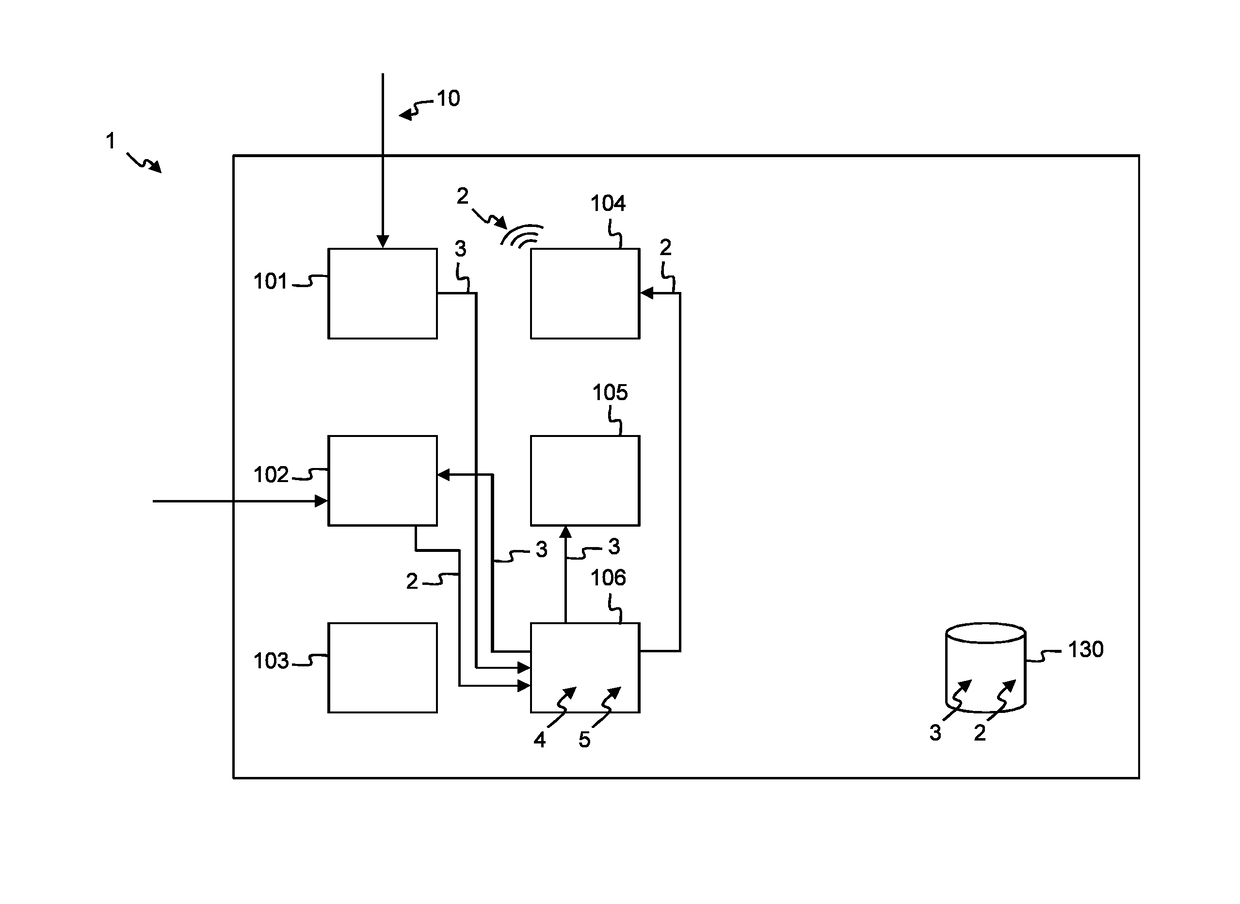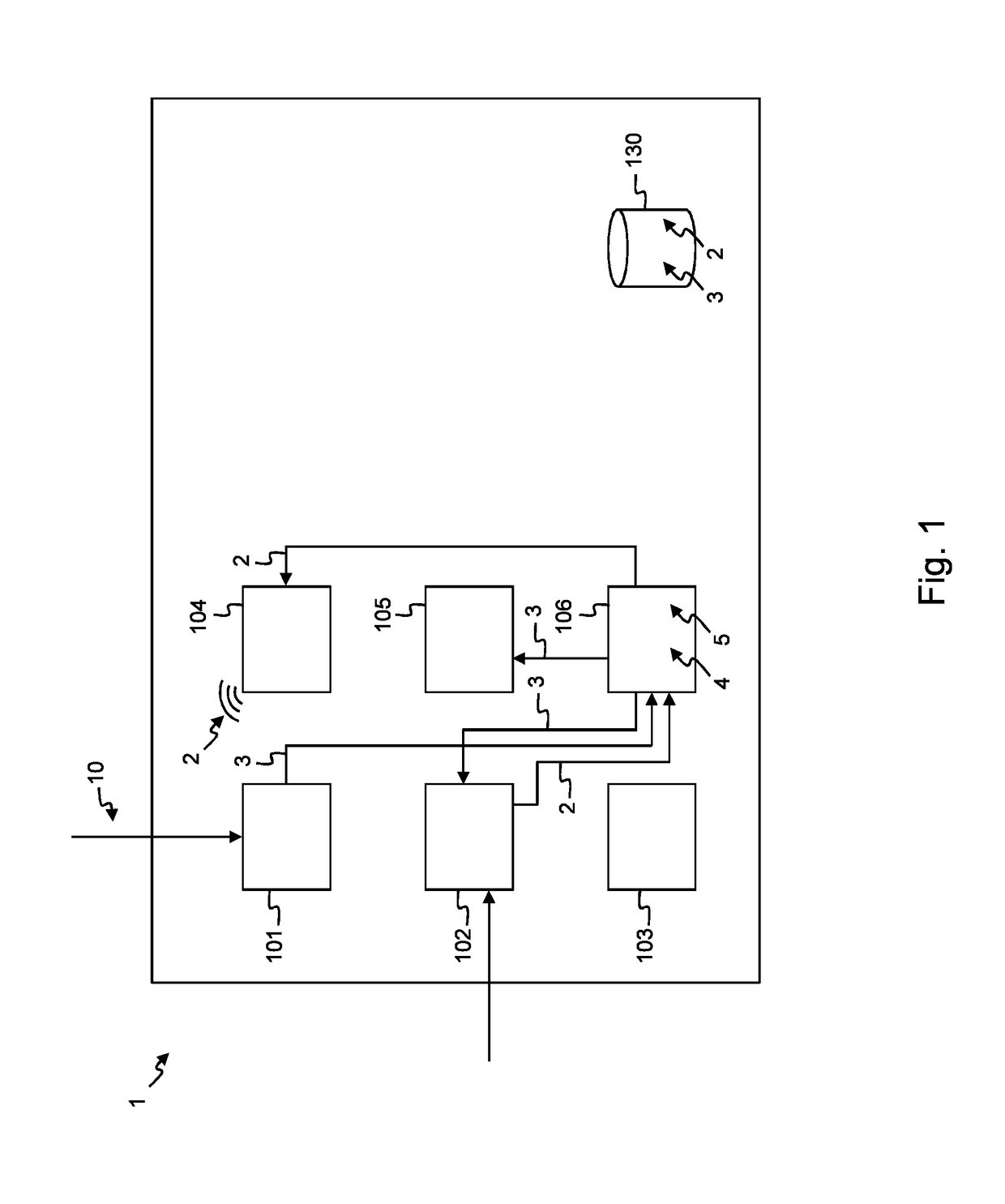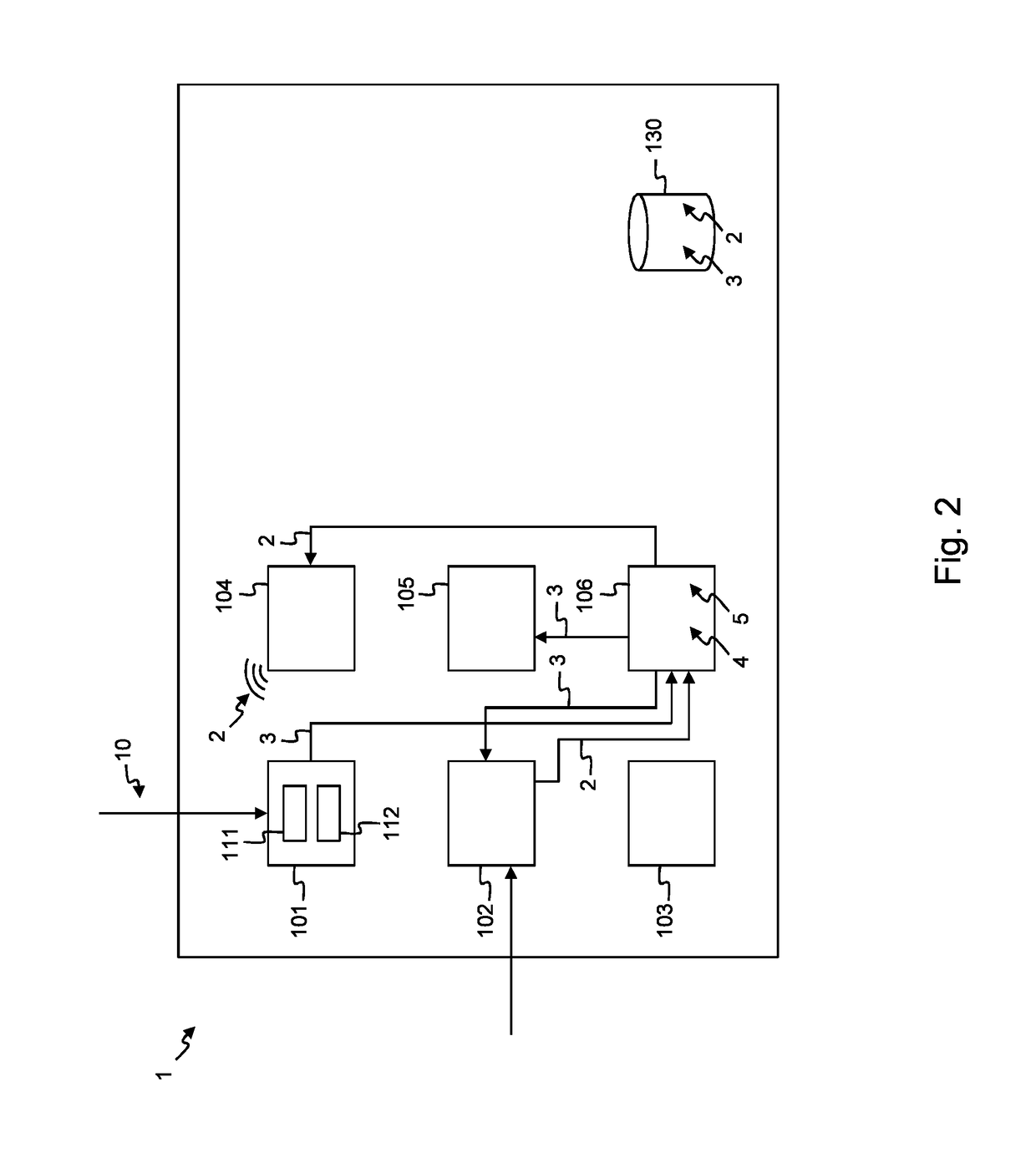Battery-powered, wireless gas sensing unit
a gas sensing unit and wireless technology, applied in the field of gas sensing, can solve the problems of limited portability of gas sensing units, difficulty in monitoring iaq in industrial factories or plants, and operator danger, and achieve the effect of saving battery, maximizing the life of the battery unit of the gas sensing unit in accordance with the present invention, and low demand
- Summary
- Abstract
- Description
- Claims
- Application Information
AI Technical Summary
Benefits of technology
Problems solved by technology
Method used
Image
Examples
Embodiment Construction
)
[0061]According to an embodiment shown in FIG. 1, a battery-operated, wireless gas sensing unit 1 comprises a first sensor 101, a second sensor 102, a battery unit 103, a wireless transmitter 104, a processor 105, a controller 106 and a memory 130. Crossing lines in FIG. 1 are not to be interpreted as connections. The first sensor 101 frequently measures a value 3 of a first parameter 10. For example, the first sensor 101 measures a value 3 of a first parameter 10 periodically. The first sensor 101 can for example measure a value 3 of a first parameter 10 every 30 seconds, every minute, every 2 minutes, every 5 minutes, every 10 minutes, every 30 minutes, every hour, every 12 hours, or every 24 hours, etc. According to an alternative embodiment, the first sensor 101 frequently measures a value 3 of a first parameter 10. For example, the first sensor 101 measures a value 3 of a first parameter 10 several times per minute, or several times per hour, or several times per day, etc. A v...
PUM
| Property | Measurement | Unit |
|---|---|---|
| temperature | aaaaa | aaaaa |
| temperature | aaaaa | aaaaa |
| temperature | aaaaa | aaaaa |
Abstract
Description
Claims
Application Information
 Login to View More
Login to View More - R&D
- Intellectual Property
- Life Sciences
- Materials
- Tech Scout
- Unparalleled Data Quality
- Higher Quality Content
- 60% Fewer Hallucinations
Browse by: Latest US Patents, China's latest patents, Technical Efficacy Thesaurus, Application Domain, Technology Topic, Popular Technical Reports.
© 2025 PatSnap. All rights reserved.Legal|Privacy policy|Modern Slavery Act Transparency Statement|Sitemap|About US| Contact US: help@patsnap.com



